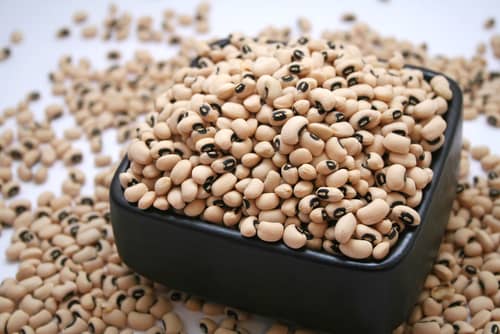Moin-Moin: To Peel Or Not To Peel The Beans
I recently made a batch of moin moin. As I meticulously peeled…

I recently made a batch of moin moin. As I meticulously peeled each cowpea (beans), I found myself wondering if all the work was worth the effort.
Known as dehulling, peeling the entire outer shell of the cowpea is a step that many-a-Nigerian-cook deems essential in the pursuit of perfect moin moin. Dehulling produces “perfect” moist and tender moin moin. Leaving the hull (skin) creates a product that is tough and dry with an unappealing color.
As a self-declared gastronomist, I appreciate a tasty batch of moin moin. However, as a nutritionist, I find myself cringing at the sight of hull, separated from the pea before being thrown in the trash without even the bat of an eyelash.
RELATED: Moin moin with Unpeeled Beans Recipe

It’s All About Fiber!
Although the hull is the outermost part of the cowpea, it contains disease fighting antioxidants, essential B-vitamins and more importantly, dietary fiber – a nutrient sometimes called “Nature’s Broom” because it removes waste and cleans the colon. Fibre improves stool quality, promotes regularity and decreases constipation. In addition, adequate intakes of fibre promote satiety and have been demonstrated to help prevent obesity, diabetes, cardiovascular diseases and various forms of cancer.
The World Health Organization recommends that adults consume approximately 27-40g of fiber every day. Unfortunately, with the rapid influx of affordable highly processed, quick and easy foods, many of us do not even get half of this recommended amount.
We no longer eat fresh fruits and vegetables but instead we consume commercially prepared staples like “fufu-in- a-box” and white rice which are often stripped of fiber long before they reach our supermarket shelves.
The United States Department of Agriculture estimates that 1 cup of raw cowpeas provides 18g of fiber; that is almost half the daily requirement. Unfortunately, the average Nigerian will not reap this benefit from moin moin because most of the fiber in the beans is discarded.
What’s a Moin Moin Lover to do?
To reap all the benefits of healthy cowpeas, consider doing some of the following things:
- Leave some of the hull on the cowpeas and experiment with a variety of toppings. Depending on what other ingredients you add, the look and mouth feel of the hull can be masked.
- Experiment with different beans or peas, some are softer and grind smoothly.
- Add vegetables which although not as high as the whole cowpea, are a great source of fibre.
- Make pea fibre. Rather than throw valuable nutrients in the trash, consider making a batch of healthy pea fibre. Simply dry the hull, pound it, or use a food processor to create a fine powder. Add it to baked goods and boost their fibre content with this rather unexpected ingredient.
- Serve a side of fresh fruit or vegetables every time you serve Moin Moin. every day to ensure you get the recommended fibre amounts.
While it may be easy for me to declare that Moin Moin should now be eaten with the hull because the hull is high in fibre, it is not always a practical recommendation. Personal taste preferences definitely should be considered. There is no point in making fibre filled Moin Moin if no one will eat it.
If your family does not mind Moin Moin with a different consistency than the traditional variety, try leaving the hull. However, if everyone turns their nose up at the very sight of it, don’t serve it. Rather, look to add fibre by following the above tips or adding a wide variety of fresh fruits, raw vegetables, whole grains and other unprocessed foods.
Try Radiant‘s delicious hulled beans moin moin recipe!
Here’s to your health.

